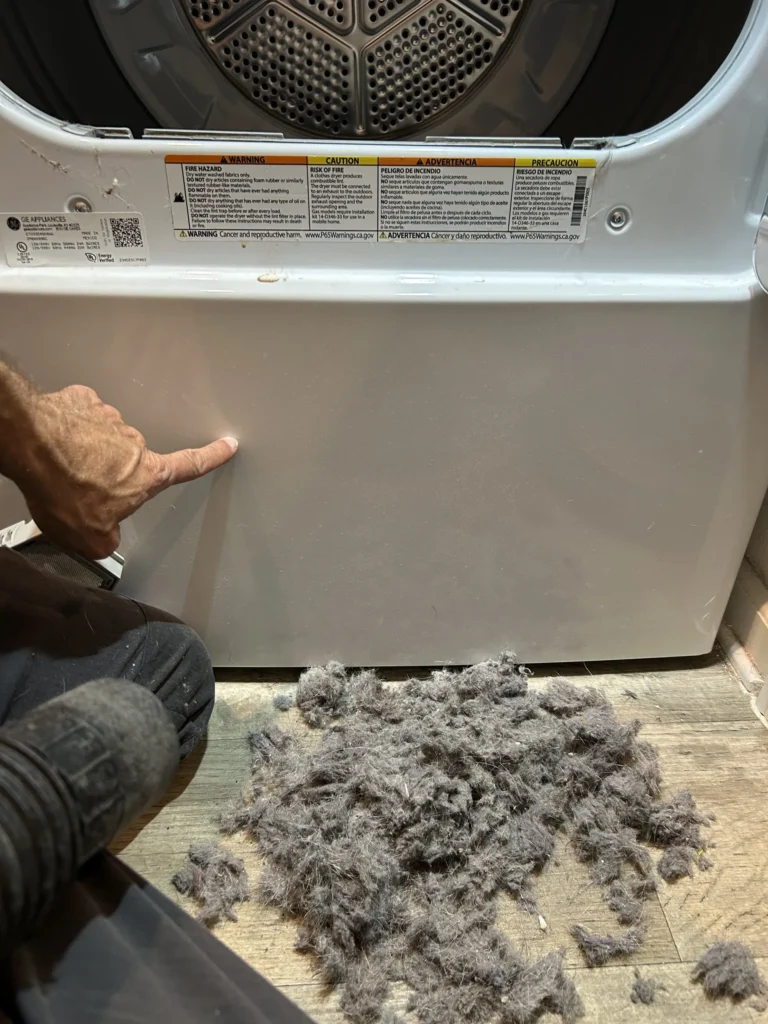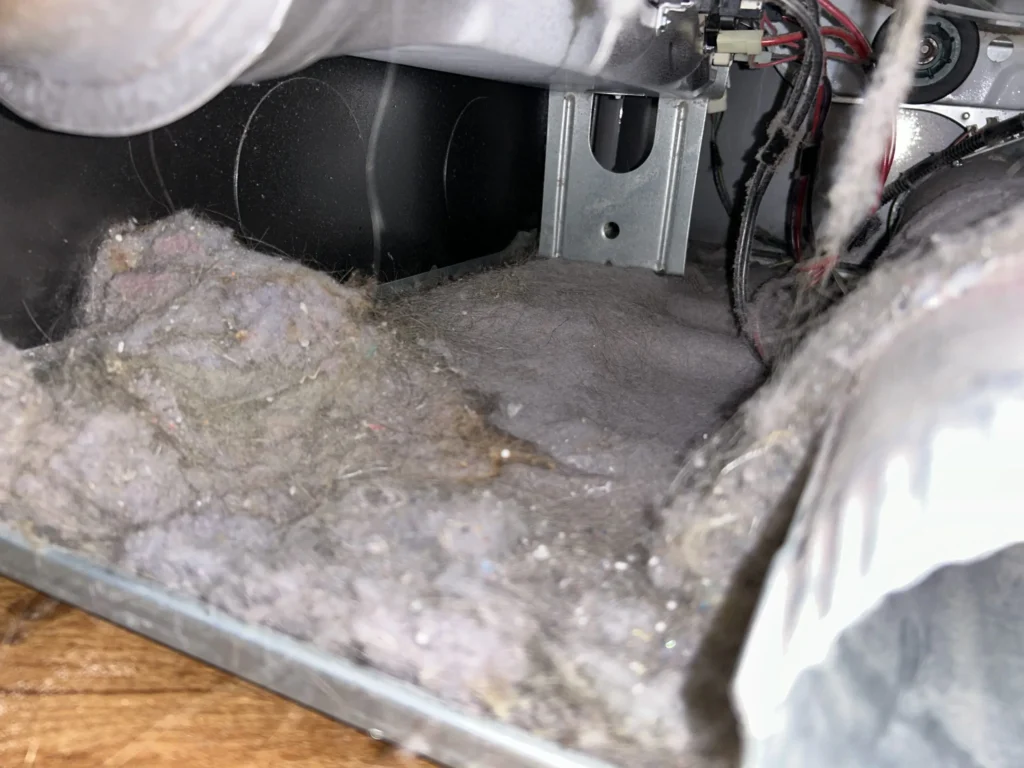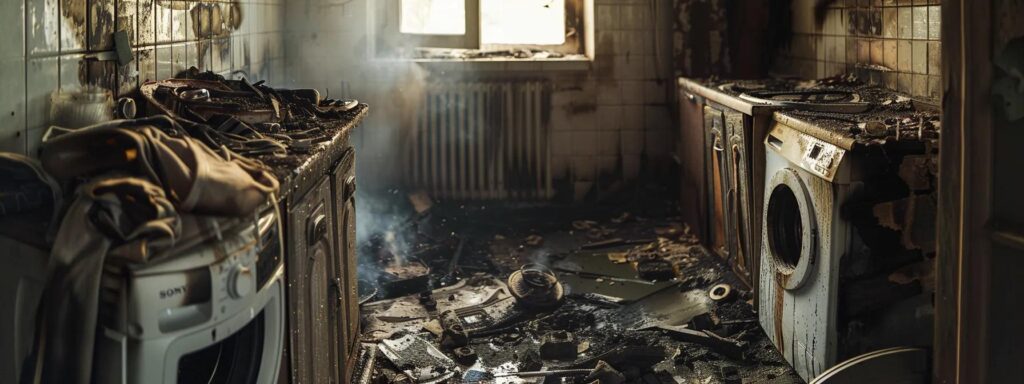700

Lint Buildup Fire Risks You Didn't Know About
Lint buildup in household dryers and in the laundry room poses often-overlooked fire risks. While many homeowners may routinely clean the lint trap, they may not be aware of the broader hazards associated with lint accumulation in clothes dryers, dryer vents, and exhaust systems. This guide aims to uncover hidden lint fire dangers, the science behind lint hazards, and proactive measures for homeowners to ensure safety. One crucial takeaway is that regular dryer vent cleaning is paramount to reduce these fire risks.
What is lint buildup and how does it contribute to fire hazards?
Lint buildup refers to the accumulation of fibers, dust, and debris that occurs in dryer vents and around drying appliances. This buildup can significantly increase the risk of fire, as lint is highly flammable. According to the National Fire Protection Association (NFPA), dryers and washing machines were the cause of about 13,820 home structure fires in 2022. These fires accounted for an estimated 236 million dollars in property damage and often arise from lint igniting in poorly maintained dryer vents.
How does lint accumulate in drying appliances?

Lint accumulates in drying appliances due to the drying process’s nature. When clothes are tumbled in a dryer, fibers are released into the air, where they are drawn into the venting system. This is a continual process that can lead to significant lint buildup over time if not managed through regular cleaning and maintenance. Studies emphasize that lint buildup can occur even in well-maintained machines if the vent system is too long or has excessive bends, which can trap lint more easily.
Where are the unseen risk zones in drying appliances?
The main risk zones in drying appliances include the lint trap, duct, and exhaust system. Notably, lint can accumulate beyond the lint trap itself, reaching deeper parts of the dryer, including the area surrounding the heating element. This accumulation can lead to overheating and potentially cause a fire. Furthermore, long duct runs with sharp turns can trap lint, exacerbating the problem. It is vital for homeowners to recognize these hidden accumulation zones to mitigate risks effectively.
What routine checks should be performed to reduce lint-induced fire threats?

Routine checks are essential for reducing lint-induced fire threats. Homeowners should inspect and clean the lint trap before every load. Additionally, they should schedule a comprehensive dryer vent cleaning at least once a year, ideally by a professional service like Pensacola’s Dryer Vent Cleaning Experts. A visual inspection of the ductwork can also help identify blockages; a flashlight or mirror can illuminate hidden areas where lint might accumulate. Ensuring that the outside vent flap opens freely during operation is another critical check to avoid trapped lint. Make sure to keep a fire extinguisher near by. Plastic could also experience combustion if you’re not careful.
What are some real-world cases of lint-related fire incidents?

Numerous incidents have highlighted the risks posed by lint buildup. For example, in 2021, a family in California lost their home to a fire caused by accumulated lint in their dryer vent. The homeowners reported they had not cleaned the duct for over two years, illustrating the potential consequences of neglecting routine maintenance. Moreover, a report from the NFPA details that nearly one-third of dryer fires are due to failure to clean the appliance. These examples underscore the critical importance of preventing lint buildup.
What proactive measures can be taken to minimize lint fire dangers?
To minimize lint fire dangers, proactive measures must be adopted. Homeowners should invest in proper ventilation systems that reduce bends and long runs in the ductwork. Installing lint guards can also help filter out excess lint before it enters the duct system. Furthermore, utilizing dryers equipped with moisture sensors can help prevent overheating. Maintaining all dryer connections and ensuring that they are secure can also mitigate the risk of fire. Comprehensive fire safety measures, including having a smoke detector or fire extinguisher readily available, should not be overlooked. Have an apartment or live in an apartment, read more here.
What causes lint to accumulate in dryer vents?
Accumulates from fibers released during the drying process, especially in long or bent vents.
How often should I clean my dryer vent?
It is recommended to clean your dryer vent at least once a year, more often if you use your dryer frequently and if you want your indoor air quality to be perfect.
Can lint buildup lead to fires?
Yes, is highly flammable, and buildup significantly increases the of dryer fires.
How can I tell if my dryer vent is clogged?
If your dryer takes longer to dry clothes, is overheating, or the outside vent flap doesn’t open, it may be clogged and cause an emergency.
What are the signs of a dryer fire risk?
Signs include excessive longer drying times, a burning smell, and visible accumulation around the dryer.
Understanding lint buildup fire risks and taking proactive steps is crucial for household safety. You can find out more about understanding dryer vents here. Routine maintenance not only protects your home from fire hazards but also promotes energy efficiency in drying appliances. By implementing thorough cleaning practices and investing in professional services, homeowners can significantly minimize their risk. Always prioritize the safety of your home and family by being vigilant about dryer maintenance. Contat us if you have any questions or concerns about your home or family. We’ll be glad to talk further.


